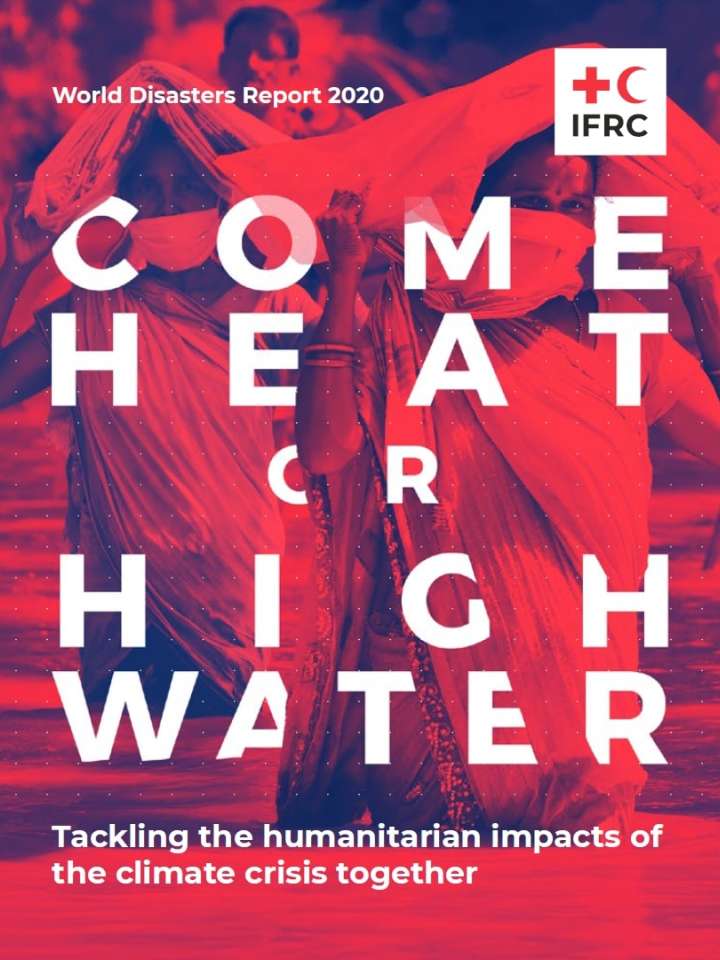World Disasters Report 2020
The analysis presented in World Disasters Report 2020 shows that none of the 20 countries most vulnerable to climate change (according to ND-GAIN) and to climate- and weather-related disasters (according to INFORM) were among the 20 highest per person recipients of climate change adaptation funding. Somalia, the most vulnerable, ranks only 71st for per person funding disbursements. None of the countries with the five highest disbursements had high or very high vulnerability scores. At the other end of the spectrum, 38 high vulnerability countries (out of 60) and 5 very high vulnerability countries (out of 8) received less than $1 per person in climate adaptation funding, while two (Central African Republic and DPRK) received no disbursements at all. Notably, none of the largest five recipients are fragile contexts.
The World Disasters Report 2020 takes a deep dive into the disaster risks that climate change is driving, and analyses the action needed to address their human impacts.
- Chapter 2, Hazards everywhere - climate and disaster trends and impacts
- Chapter 3, Climate as a risk multiplier - trends in vulnerability and exposure
- Chapter 4, Reducing risks and building resilience - minimizing the impacts of potential and predicted extreme events
- Chapter 5, Going green - strengthening the environmental sustainability of response and recovery operations
- Chapter 6, Climate-smart disaster risk governance - ensuring inclusive and coherent regulatory frameworks
- Chapter 7, Smart financing - getting the money where it’s needed most
Throughout, the World Disasters Report 2020 insists that urgent action must be taken at the community level, where it is needed the most. But all actors have to be smarter about how they do this. In its recommendations, the report calls for all actors to be climate smart, to get the priorities right, and to integrate and localize climate and disaster risk management approaches.
Explore further
